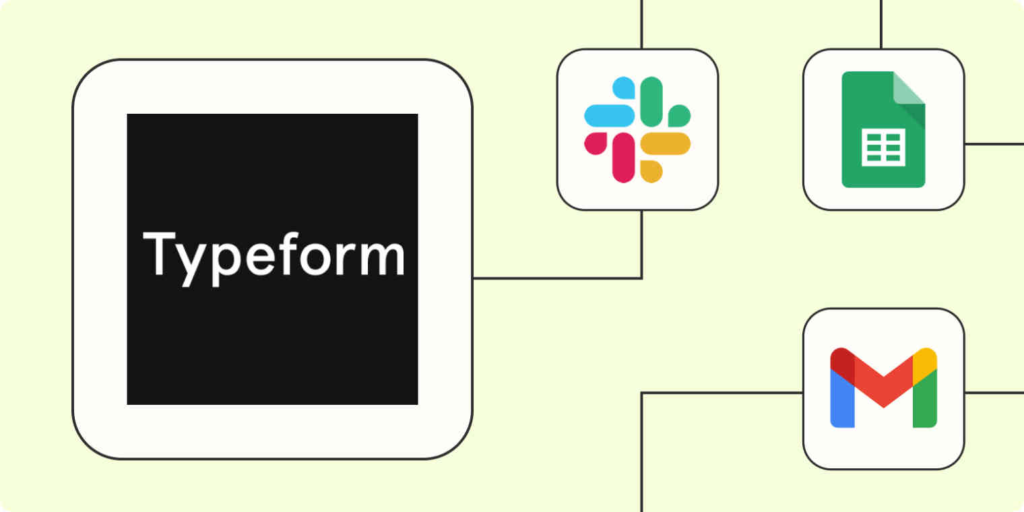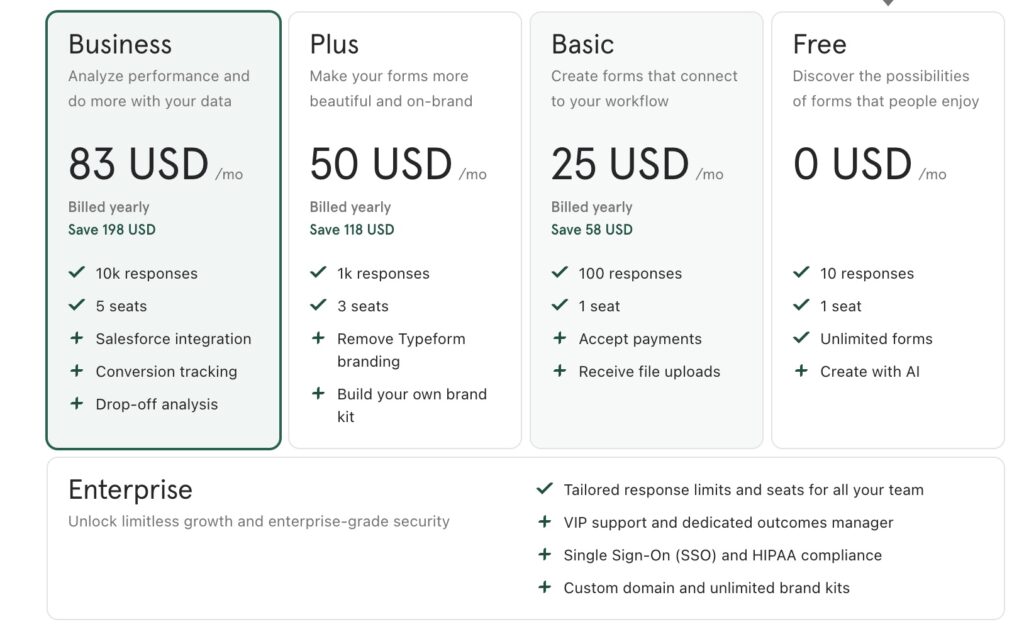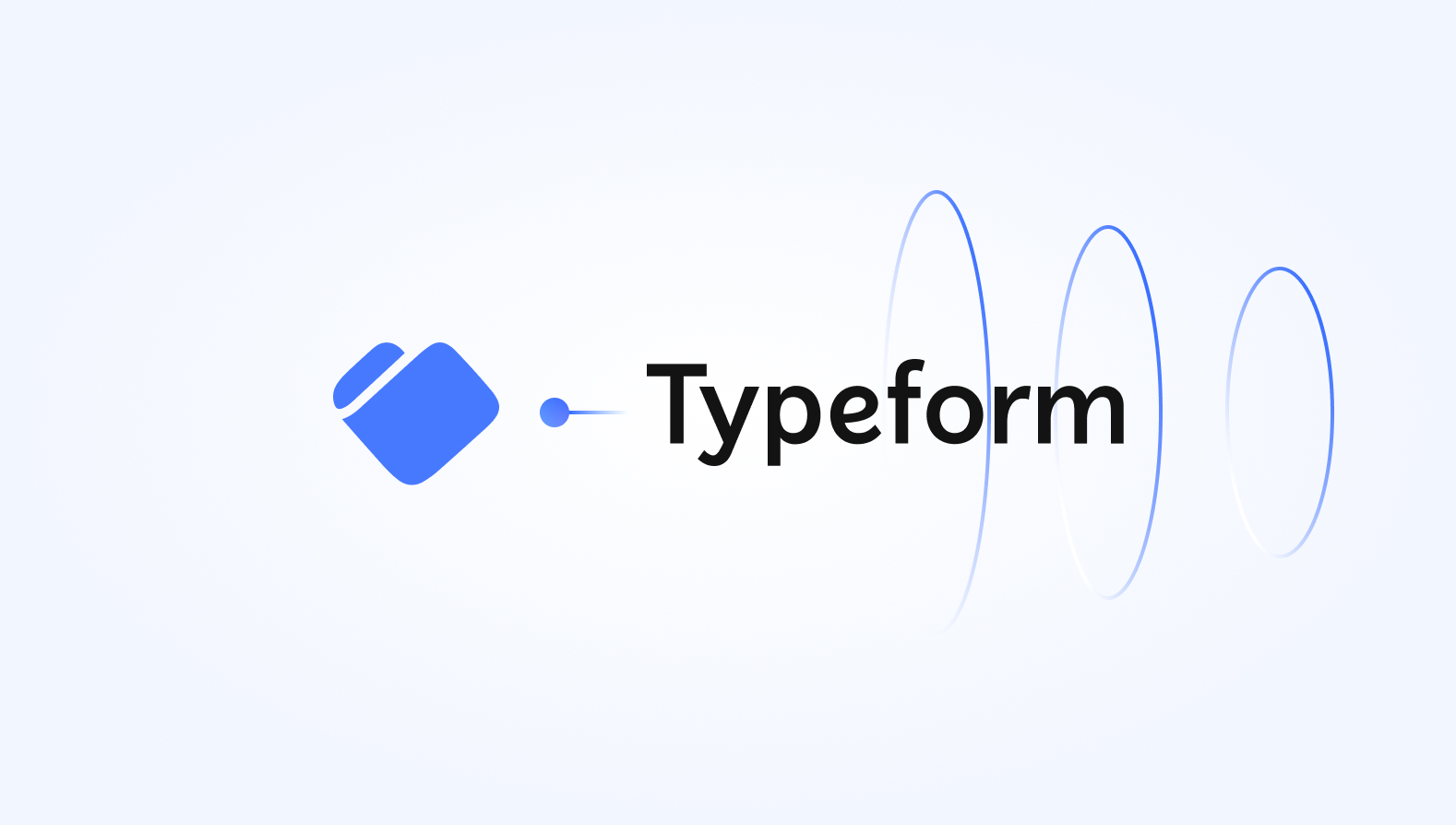In this review of Typeform pricing, Typeform stands tall as a versatile and intuitive solution for businesses, educators, and creators alike. Today, we’ll dive into Typeform pricing, what Typeform offers, dissect its features, weigh its pros and cons, share personal insights, delve into its pricing structure, explore alternatives, and provide a comprehensive overview to help you make an informed decision.
Table of Contents
What is Typeform?
Typeform is an innovative online form builder that redefines the user experience when it comes to creating surveys, questionnaires, and data collection forms. With its sleek interface and intuitive design, Typeform simplifies the process of crafting visually appealing and interactive forms, making it an ideal tool for gathering feedback, conducting market research, or organizing events.

Key Features: Typeform Pricing and Typeform Log in experience
In the competitive landscape of online form builders, Typeform emerges as a standout solution, seamlessly blending intuitive design with powerful functionality. Its feature-rich platform empowers users with a diverse array of tools, from an intuitive drag-and-drop builder for effortless form creation to interactive design elements that enhance user engagement. With Typeform, customization knows no bounds, offering a plethora of question types, multimedia integration, and conditional logic options. Seamlessly integrating with third-party tools, Typeform ensures a streamlined workflow and efficient data management. From startups to enterprise-level organizations, Typeform’s robust features cater to a myriad of needs, making it the go-to choice for those seeking a dynamic and user-centric form-building experience.
- Intuitive Form Builder: Typeform’s drag-and-drop builder empowers users to create customized forms effortlessly, with options to add various question types, multimedia elements, and conditional logic.
- Interactive Design Elements: Elevate your forms with features like conditional logic, progress bars, and custom branding, enhancing engagement and user experience.
- Seamless Integration: Typeform seamlessly integrates with popular third-party tools and platforms, allowing for automated data syncing and streamlined workflow management.
Pros & Cons: From Pricing to designs
When considering Typeform, it’s essential to weigh both its strengths and limitations to make an informed decision. One of its undeniable pros lies in its user-friendly interface, requiring no coding knowledge and enabling even novice users to create visually stunning forms with ease. Additionally, Typeform boasts a wide range of question types and customization options, allowing for unparalleled flexibility in form design. Its seamless integration with other tools and platforms further enhances its appeal, streamlining workflow and maximizing productivity. However, it’s worth noting that while Typeform offers a free plan, its pricing for advanced features may deter some users. By carefully evaluating these pros and cons, users can determine whether Typeform aligns with their specific needs and priorities.
Pros:
- User-friendly interface that requires no coding knowledge
- Wide range of question types and customization options
- Engaging and interactive form designs
- Seamless integration with other tools and platforms
Cons:
- Pricing may be prohibitive for some users, especially for advanced features
- Limited design customization options in the free plan
Typeform log in Customer Experience
When it comes to customer experience, Typeform excels in delivering seamless interactions and garnering valuable insights. Users consistently praise its intuitive interface, which fosters effortless navigation and form creation, leading to higher engagement rates and enhanced data collection. With Typeform, every touchpoint is meticulously designed to prioritize user satisfaction, from the responsive design that ensures optimal viewing across devices to the real-time feedback mechanism that fosters continuous improvement. Its commitment to user-centricity extends beyond the platform itself, with responsive customer support teams readily available to address queries and provide assistance. In essence, Typeform prioritizes the customer experience at every turn, making it a top choice for businesses seeking to elevate their interactions and glean actionable insights.
Typeform Pricing Experience
Typeform offers flexible pricing plans to suit different needs and budgets. From a free basic plan with limited features to premium plans with advanced functionality and higher response limits, there’s an option for every use case. However, it’s crucial to evaluate your requirements and choose a plan that aligns with your specific needs and budget.

Possible Alternatives
While Typeform shines as a top-notch form builder, there are alternatives worth considering depending on your preferences and requirements. Some notable alternatives include Google Forms, SurveyMonkey, and Wufoo, each offering unique features and pricing structures to cater to diverse needs.
Empowering Your Form-Building Journey: A Definitive Conclusion to Typeform Review
In conclusion, Typeform emerges as a formidable contender in the realm of online form builders, offering a sleek interface, intuitive design, and robust features to streamline data collection processes. While Typeform pricing may be a consideration for some, the platform’s versatility and ease of use make it a valuable asset for businesses, educators, and creators alike. By weighing the pros and cons, exploring pricing options, and considering alternatives, you can harness the power of Typeform to elevate your data collection efforts and engage with your audience effectively.




